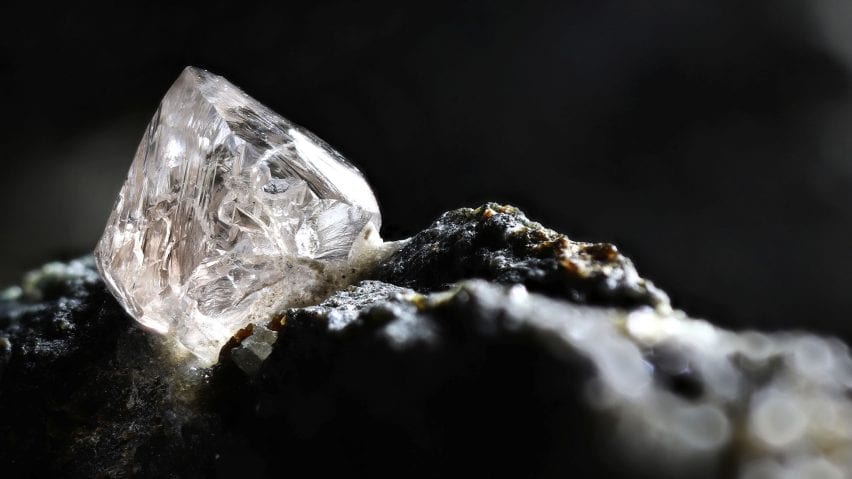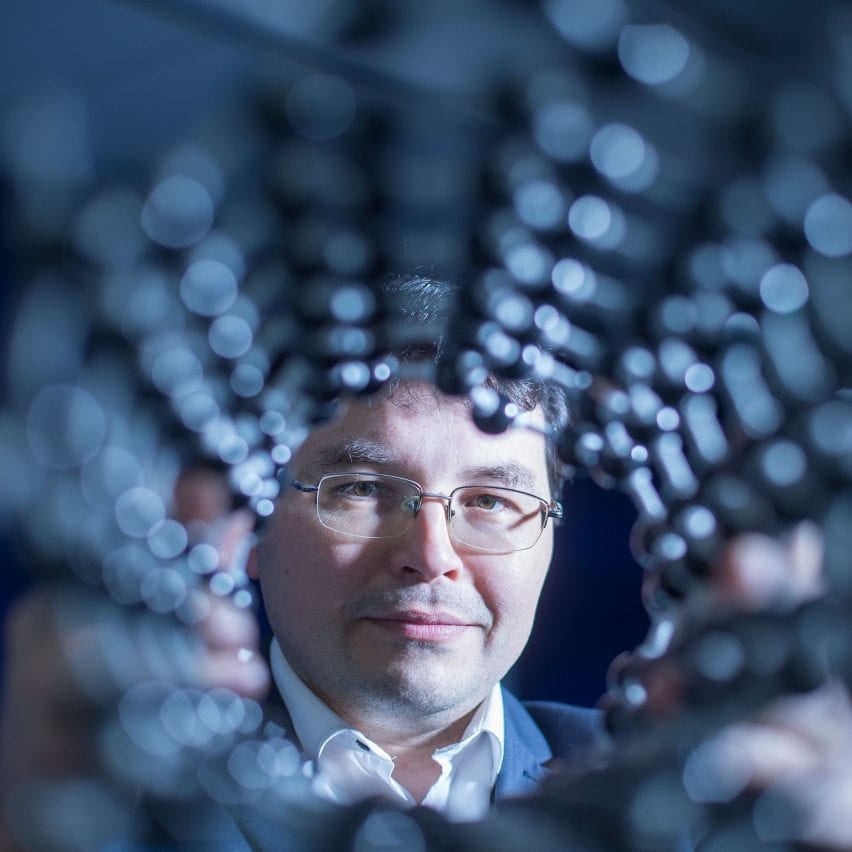
Carbon is "unprecedented as far as the elements are concerned" says nanomaterials professor
Capable of forming diamonds, graphene and life itself, carbon taken from the atmosphere will soon be used to produce plastics and fuel, according to nanomaterials professor Andrei Khlobystov.
"Carbon is very special," said Khlobystov, who is professor of nanomaterials at the University of Nottingham's School of Chemistry.
"We are carbon-based life forms. All life on Earth is based on carbon. And this is not a coincidence."

Khlobystov, who is director of the Nanoscale and Microscale Research Centre at the English university, studies carbon at a molecular scale.
Carbon atoms are uniquely versatile, he says, because of their ability to form strong bonds with other carbon atoms as well as atoms of other elements. This allows them to form more chemical compounds than any other element.
"This is actually quite unprecedented as far as the elements are concerned," Khlobystov explained. "It can form different types of bonds, very strong ones. It can exist in different hybridisation states."
Carbon has a "very rich chemistry"
This means that the same carbon atoms can arrange themselves in many different patterns, creating vastly different materials. Diamond, for example, is pure carbon and is the hardest substance on earth. But soft, weak graphite is also pure carbon.
Carbon has more of these variants, or allotropes, than any other element. "The existence of allotropes is just a manifestation of the very rich chemistry of carbon as an element," said Khlobystov.
Graphene is another carbon allotrope. This is a grid of carbon that is just one atom thick. Since it was first isolated in 2004 it has been touted as a wonder material due to its strength and lightness.
"Graphene is the most hotly discussed allotrope at the moment," said Khlobystov. "It is a good conductor of electricity, it's very thin, very light and very strong."
Besides these inorganic allotropes, there are "millions of organic forms of carbon including molecules in our body," Khlobystov explained.
Life on other planets "likely to be carbon-based"
Carbon is the essential building block of all life on earth, since its ability to form strong bonds with other elements allows it to help construct a wide range of complex molecules. Carbon is essential to the formation of the four major organic compound groups, which are carbohydrates, lipids, proteins and nucleic acids.
If there is life on other planets, it is highly likely to be carbon-based, Khlobystov said.
"Silicon has similar chemistry [to carbon]," he said. "So perhaps there could be life forms that are based on silicon on some other planets.
"It's an interesting thought but actually silicon is not as effective at forming bonds as carbon."
Research into new carbon nanomaterials is extremely promising
Khlobystov received an MSc from Moscow State University and a PhD from the University of Nottingham before working as a postdoctoral research assistant at Oxford University's Department of Materials.
His current research focuses on finding uses for carbon nanomaterials, particularly carbon nanotubes and fullerenes, which are another class of carbon allotropes.
While nobody has yet worked out practical uses for the latter, the former are extremely promising.
Carbon nanotubes are single-atom sheets of carbon that have been rolled into a cylinder. They can be spun into extremely strong but extremely thin threads.
"They're about 80,000 times thinner than the diameter of human hair," Khlobystov said . "So obviously we don't see them with the naked eye, we have to use an electron microscope."
The nanomaterial is already being used to strengthen tennis rackets and, due to their excellent electrical conductivity, they could play an important role in the development of microcomputers.
"Good progress" is being made in developing methods for capturing and utilsing atmospheric carbon
Besides it's life-giving and life-enhancing properties, carbon is of course playing a key role in the biggest challenge facing life on earth since carbon dioxide is the main cause of climate change.
However, Khlobystov is optimistic that humanity will be able to remove excess carbon from the atmosphere and put it to good use.
Ways of doing this include direct air capture using machines as well as natural carbon-capture techniques including afforestation and soil sequestration.
Carbon produced by burning fossil fuels can also be captured before it reaches the atmosphere via a process known as post-combustion capture, although the technology is not yet affordable enough to be widely deployed.
Captured carbon can be used to create a wide range of useful products
"It's important to capture these carbon-containing molecules [in the atmosphere], he said. "For example, with a factory or a power station, there's a lot of carbon dioxide emitted through the chimney.
"You can capture it on site and turn it into something useful so it doesn't even go into the atmosphere. Chemistry is making good progress so hopefully, we can do that."
Once it has been captured, atmospheric carbon can be used in myriad ways, Khlobystov said.
"For example, if you take carbon dioxide, remove oxygen atoms and add some hydrogen atoms, we can make liquid fuels that we can use to drive cars," he said.
"Then we're not producing any new carbon dioxide. We're simply just taking it from the air and recycling it. That would stop our dependence on fossil fuel."
"You can also turn it into polymers," he continued. "You can make plastic. You can make chemicals. We can make ethanol out of carbon dioxide and then use it to make vodka, for example."
However, because carbon atoms form such strong bonds, it takes a lot of energy to break carbon dioxide molecules into their constituent parts.
"You have to activate the bonds in carbon dioxide molecules, which are quite strong. It's quite difficult to get them reacting, so you need to have efficient catalysts."
Process called catalysis is key to turning captured carbon into useful products
Converting carbon dioxide into new materials will need to be powered by renewable energy, otherwise the process will add more CO2 to the atmosphere than it removes.
"This is quite important because we cannot turn carbon dioxide into something useful by burning more fossil fuels," Khlobystov said. "That does not make any sense."
Yet advances in catalysis, which uses electro-chemical reactions to turn CO2 into new compounds, promise to make this viable within a few years, he predicted.
"It all relies on catalysis," he said. "That's where the chemistry community has actually been quite successful lately."
Affordable catalysis is "not far from being scalable," he concluded.
"I'm quite optimistic that actually maybe in the next five or 10 years there will be schemes that will be part of our infrastructure where carbon dioxide will be converted into useful things."

Carbon revolution
This article is part of Dezeen's carbon revolution series, which explores how this miracle material could be removed from the atmosphere and put to use on earth. Read all the content at: www.dezeen.com/carbon.
The sky photograph used in the carbon revolution graphic is by Taylor van Riper via Unsplash.